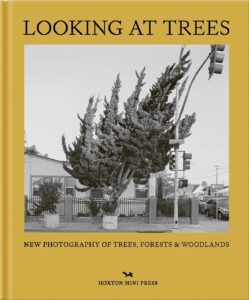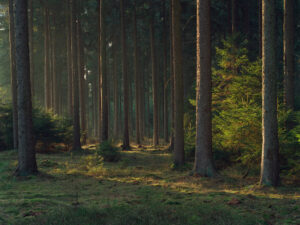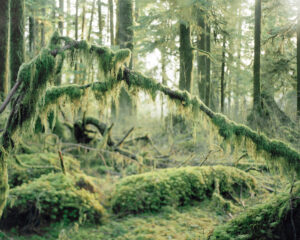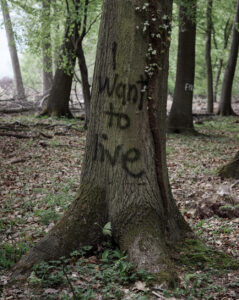In an edited extract from the introduction of ‘Looking At Trees: New Photography of Trees, Forests & Woodlands’ (Hoxton Mini Press), Sophie Howarth considers how trees mirror back truths — both welcome and uncomfortable — about human nature.

“It’s amazing how crazy things become, once you start looking at them,” says Nick Hoel, the artist at the heart of The Overstory, Richard Powers’ celebrated novel about the interdependence of people and trees. The story begins when Jørgen Hoel, an ancestor of Nick’s, emigrates from Norway to Iowa in the 1850s, and plants six chestnut seeds on the family’s new farm. Only one of the six trees survives, but it becomes a powerful emblem of endurance after a devastating blight wipes out nearly every chestnut in the US at the turn of the 20th century. When Jørgen dies, his son buys an early camera and takes a photograph of the tree every month from the same position. In time, his son does the same, and then his son, and so on for five generations. We meet Nick thumbing through this extraordinary archive, a stack of nearly a thousand photographs, trying to fathom how his entire family history could be somehow encoded in a single tree. No one in the family spoke much about the photographic project: “I promised my father and he promised his,” was all Nick gleaned from his grandfather, who made his contribution more out of duty than delight. But in a marginally more communicative moment, even his grandfather conceded that it “makes you think different about things, don’t it?”

©Alexandre Miguel Maia
How true it is that photography makes us think differently about trees. It enables us to look at them from all kinds of new temporal and spatial perspectives that illuminate how intricate and intelligent they are: “the most wondrous products of four billion years of life,” Nick’s girlfriend suggests, wryly throwing human exceptionalism into question.

©Anna Beeke
Some of us are fortunate enough to live near forests or woodlands, and most of us live within walking distance of at least a few trees, but how often do we really look closely at them? It’s a curious thing to walk past living, breathing life-forms, some-times over 100 ft tall, and barely even notice them, yet we do it almost every day. In our age of distraction, when we’ve programmed our brains to skim, scan and scroll through vast volumes of largely trivial information, we’re more and more inclined to neglect these wise but silent sentinels. The photographers in this book help restore our attention to trees, inviting us to delight in their beauty, marvel at their diversity, and revere their capacity to sink carbon, purify air, support biodiversity, and stabilise the climate. Each of the 24 projects offers a very different perspective on a common subject, but all share a wide-eyed sense of astonishment in this most magnificent yet ubiquitous of life-forms. In the most direct sense, this is a book in which humans explore the aesthetic, cultural, utilitarian and ecological significance of trees in today’s world, but in another sense it’s a book in which trees mirror back to us a series of both welcome and uncomfortable truths about human nature. The individuality of each photographer and the uniqueness of each tree make this a subtle and compelling exchange of revelations.

©Marc Wendelski
All life on Earth has a common ancestry and an interdependent future. When we chop trees down to make way for new shopping centres or apartments, destroy old-growth forests to expand motorways or mines, or contaminate our woodlands with pesticides, we are destroying ourselves too. Throughout this book, we see trees under threat from development, disease, drought and disregard. The scale of the environmental crisis we face can easily feel overwhelming, and it is becoming more and more common to turn away – but that may be the greatest risk of all. The photographers in this book do not despair, but turn to face the trees, both in their glory and in their struggle. They approach their subjects with humility and curiosity, listening intently for the lessons of arboreal wisdom. Since trees evolved over 350 million years ago, and humans have only been around for a few hundred thousand, it makes sense for us to heed the experience of our elders.
*
‘Looking at Trees’ is out now and available here (£33.25).